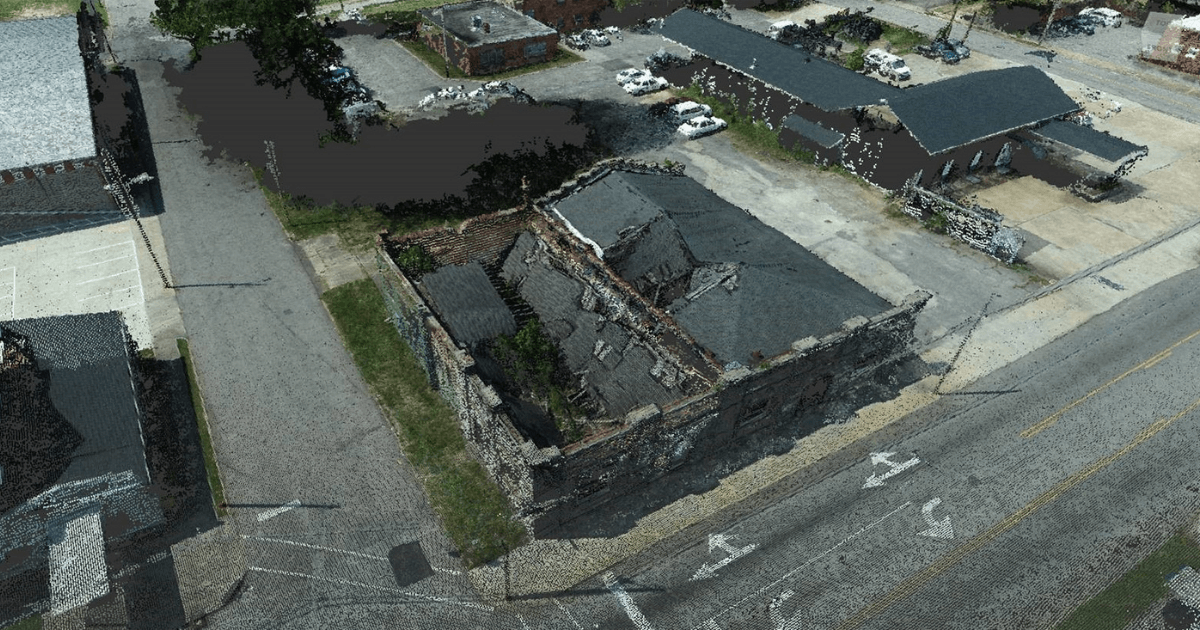
News
Asset Management With DJI Drones
City of Henderson Engineering Department, USA, says the DJI Phantom 4 RTK mapping drone is a 'valuable tool' for asset management and city planning. ... Read More

The City of Henderson Engineering Department, USA, is using drones for easier asset management and to collect topographic data for future facilities improvements;
DJI Phantom 4 RTK deployed for a range of projects, including cemetery land management, a waterline installation, and mapping Downtown Henderson;
Department describes drones as a 'critical tool for managing city assets' and the P4 RTK as being 'valuable for accurate and efficient' data collection;
Department says P4 RTK can achieve 1.5cm horizontal and 2cm vertical accuracies, with ground control points;
Heliguy has helped the Department start its drone program.
When Logan Tyndall joined the City of Henderson Engineering Department 18 months ago, his colleagues were not utilizing drone technology.
As far as they were concerned, how could something perceived by many as a toy add any substantial value to managing city assets?
But this all changed when Logan - who had previous drone experience - mapped a graveyard as a trial mission to demonstrate the advantages of deploying UAS.
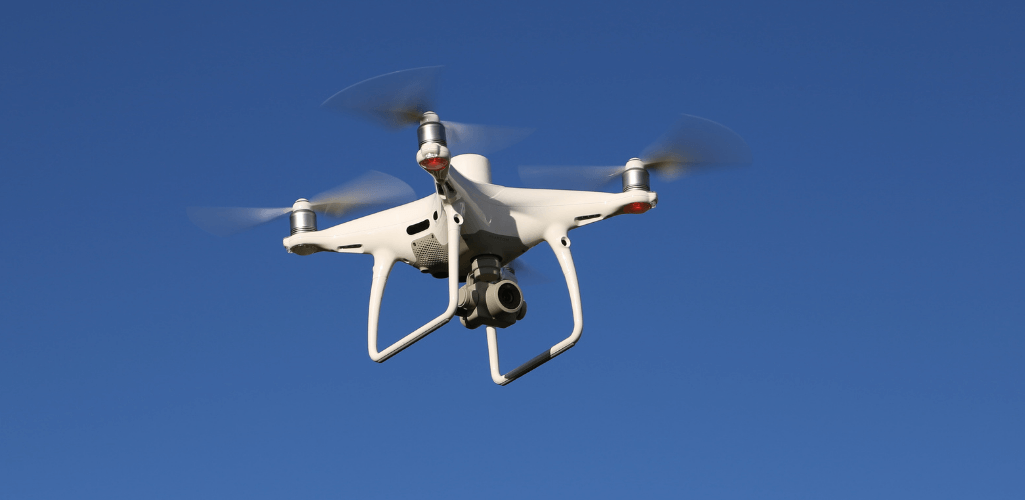
"The city cemetery was the proving ground for our soon-to-be drone program - once that map rolled out of the mapping software,they were amazed," said Logan, an engineering technician.
"Having high-resolution, accurate imagery that was worlds better than State-supplied or Google imagery proved that a drone would be a critical tool in managing city assets."
The case was made, the benefits spoke for themselves.
And since that Eureka moment, the Engineering Department for the City of Henderson - North of Raleigh, North Carolina, USA - has not looked back.
Now a firm advocate of UAS technology, the Department turned to drone specialist HELIGUY.com™ to supply the DJI Phantom 4 RTK; a low-altitude mapping aircraft which can capture centimeter-accurate data.
Mapping The City of Henderson With The Phantom 4 RTK
The City of Henderson is using the Phantom 4 RTK to map all City-owned facilities for easier asset management and to collect topographic data for future facilities and infrastructure improvements.
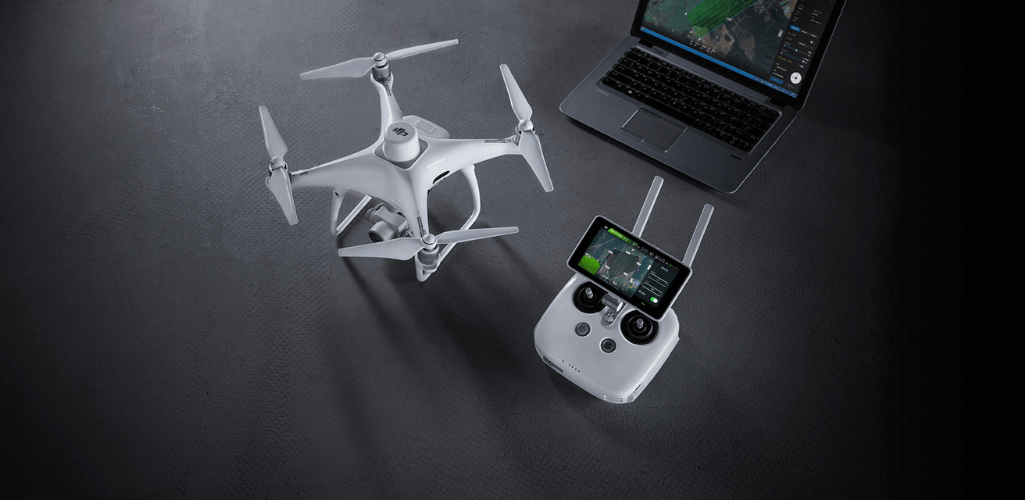
Missions have included:
High-accuracy imagery for land management of the City-owned cemetery.
Topographic survey for a new waterline installation, benefiting from the drone's rapid data acquisition, including 3D data sets.
Mapping Downtown Henderson to benefit a wide array of departments.
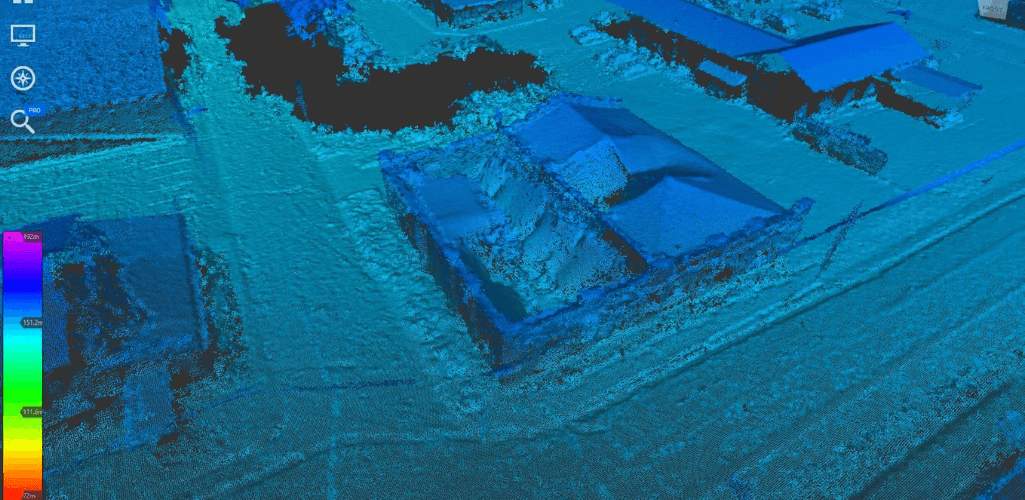
The drone has not only enabled the team to capture more accurate and higher-resolution imagery, it has also provided unique views which would be missed from ground level, and enabled the data to be collected 'without having to put boots on the ground'.
Logan said: "While this is not a tool to completely replace traditional methods in surveying and asset management; we believe that having a drone, especially the Phantom 4 RTK, is an extremely valuable tool to get the job done accurately and efficiently."
Using A Drone For City Cemetery Management
The project which really swung the pendulum in favour of adopting a drone program was mapping a City-maintained cemetery.
Typically, the team would use State imagery as a visual aid behind the parcel map.
However, while this sort of data set was accurate, the overall resolution was fairly low.
"Our Department decided to use this as a test site for accuracy verification and low-altitude mapping photography, using the drone," said Logan.
And in his own words, the results were 'quite stunning'.
This image (below, left) shows a section of the State imagery the team were using. The dark patches identify headstones, but the resolution is very low. Compare that with the drone imagery (below, right), and the difference is night and day.
"The resolution is greatly increased and a lot more detail is visible," said Logan.
The team was also impressed with the accuracy.
Logan said: "The accuracy of the State-provided map was shocking, but thanks to the drone, we captured highly-detailed photos that were within 0.1 of a foot or 3 centimeters."
While this was impressive - and more beneficial than the State imagery - Logan said that the 'real kicker' was this NDVI image; collected by the drone and reproduced in GIS imagery analysis tools.
Logan said: "The image speaks almost for itself.
"NVDI is a short-term alternative to ground-penetrating radar for the Cemetery because disturbed soil does not allow plant growth as easily as undisturbed soil.
"The disturbed soil appears to the naked eye slightly browner, but when processed through the NVDI model, it amplifies the variations in green allowing the disturbed soil, which is not as healthy, to show a vibrant orange."
Drone Mapping Downtown Henderson
The City of Henderson Engineering Department is using the Phantom 4 RTK to map the Downtown district.
This type of drone mapping is becoming popular; ideal for city management, planning and development.
Logan admits that this is a long-term project, but the team has started in earnest and captured the outer edges of the Downtown area.
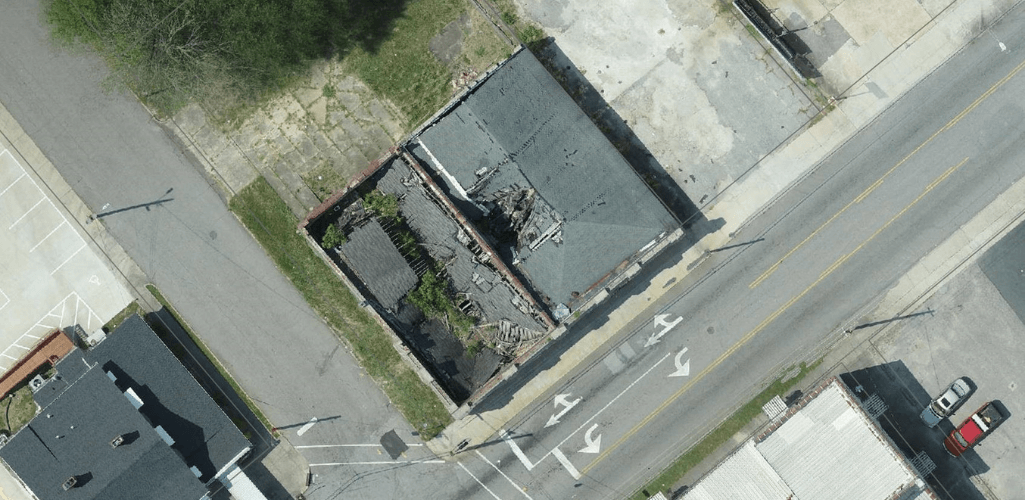
He said: "A city is always growing and requiring improvements to existing infrastructure.
"By planning ahead and capturing this information - including 3D data - via drone, we will have the data on hand when planned or emergency improvements need to happen.
"Thanks to these successful flights with the drone, we have continued our downtown map and are working on mapping every city facility.
"So far, since June 2020, we have mapped more than 2 square miles or about 1,300 acres - and counting."
The team has also found that the drone imagery can provide key insights which aren't always visible from the ground.
Take this image, for example, which is a point cloud of the same building pictured above.
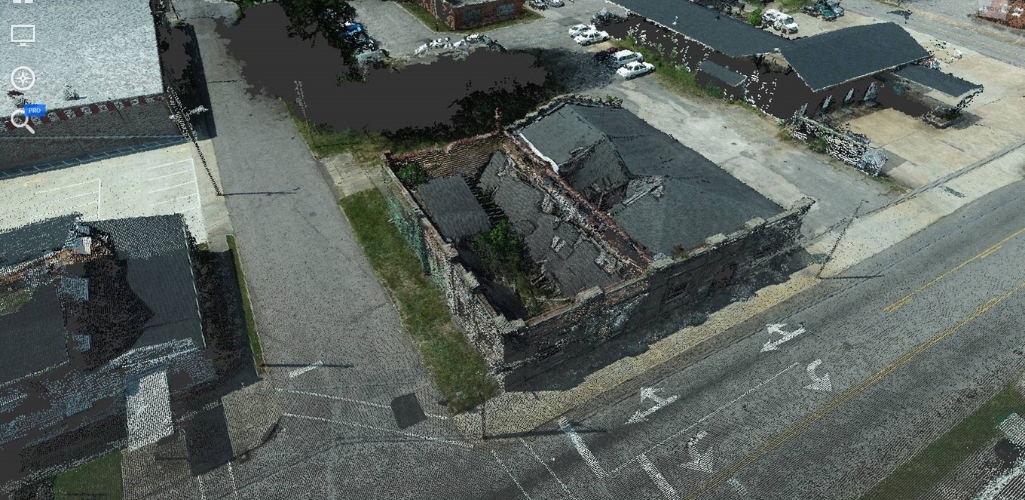
Logan said: "We found that these maps can be used for roof inspections of abandoned buildings and occupied buildings.
"From the street, these buildings do not appear to be in a bad condition, but the aerial imagery tells a different story."
Collecting this data by drone also reduces the need for staff to manually gather the information; improving efficiency and enhancing safety.
Logan said: "By having this high-resolution imagery, we can better manage our assets without even having to put boots on the ground.
"For instance, there are numerous assets, for example manholes, storm grates, fire hydrants, and sidewalks, which can be identified and even corrected in our GIS to reflect their relative position without having to leave the office."
New Waterline Installation
Having validated the drone as a tool for accurate and quality data capture, the team deployed the Phantom 4 RTK to produce an engineer's survey for a new waterline installation for a city customer.
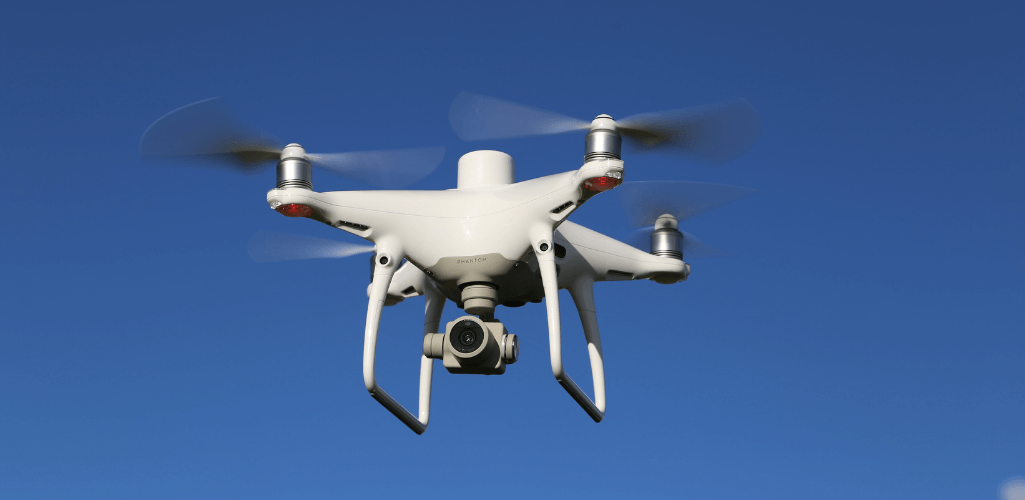
The project brief was to use the drone to capture precision data - quickly - which could subsequently be used with civil engineering design software package, Autodesk Civil 3D.
Logan said: "The flight was performed in 3D mode instead of 2D mode, like in the cemetery.
"In 3D mode, the drone end crosshatches the area of interest and takes oblique photos to increase the quality of the end 3D model.
"We did run across several issues with overall precision of the final outputs when processing the data in 3D mode, however, the accuracy was decent.
"We later managed to shrink the overall precision down to acceptable levels (0.2 feet or 6 cm) by adding more GCP points."
The team also created a point cloud through Pix4D; generating contours while removing around 95% of the points collected.
"By doing this, the contours were more uniform and cleaner looking as opposed to using all the points due to outliers skewing the data and long processing times."
This image shows the imagery laid out behind the plans, as well as the contours that were generated from the point cloud.
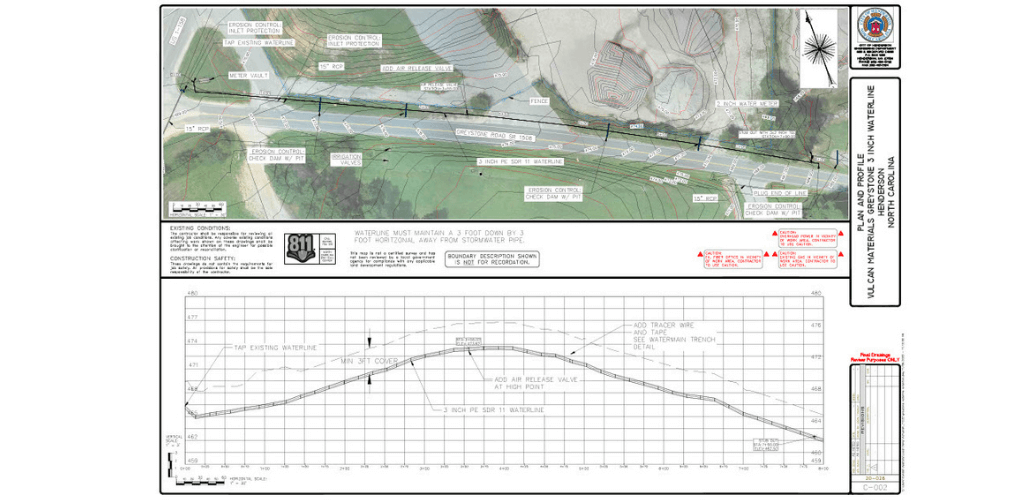
Benefits Of Using The Phantom 4 RTK
The Phantom 4 RTK is a compact drone solution, particularly suited for low-altitude mapping.
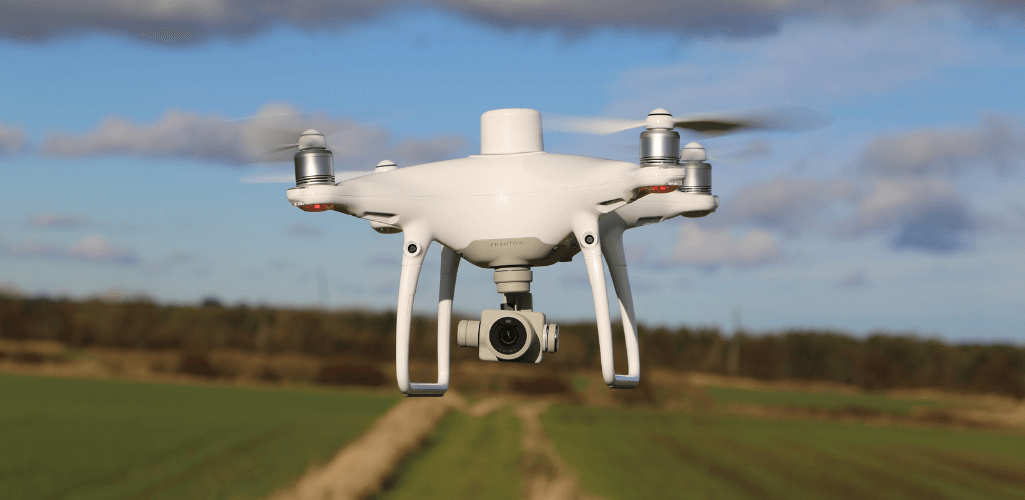
It can capture centimeter-accurate data while requiring fewer ground control points than traditional surveying methods – saving time and reducing on-site risk.
Key features include:
Integrated RTK module providing real-time, centimeter-level positioning data for improved absolute accuracy on image metadata.
One-inch, 20MP CMOS sensor and mechanical shutter to eliminate rolling shutter blur while P4 RTK in motion.
Drone can achieve a ground sample distance (GSD) of 2.74 cm at 100 m flight altitude.
TimeSync system aligns the flight controller, camera, and the RTK module. It also ensures each photograph uses the most accurate metadata.
OcuSync transmission enables stable and reliable HD image and video transmission at up to 5 km (CE) and 7 km (FCC).
Compatible with a range of industry-leading drone photogrammetry and drone-mapping software, including DJI Terra.
As far as Logan is concerned, the Phantom 4 RTK is a reliable platform.
He said: "With my combined commercial, local government, and personal experience with small unmanned aircraft, I can safely say the Phantom 4 RTK is a very viable aircraft, with many advantages over other systems."
RTK Capability
For Logan, the primary advantage is the aircraft's RTK capability.
He said: "Having all the photos accurately georeferenced directly from the drone allows for more consistent maps to use for engineering needs.
"With high confidence, I can say the position of the aircraft is within 1.5cm horizontal and 2cm vertical while taking photos, compared to an off-the-shelf drone with a positional accuracy of a couple of feet in either direction.
"When it comes to processing the photos for a map, we have accurate GCPs with our survey GPS, but we have a very important third point in the sky (RTK drone position) that is super-accurate. This greatly increases our overall accuracy."
Phantom 4 RTK Controller
The Phantom 4 RTK benefits from the DJI GS RTK app and Remote Controller with built-in screen.
This provides operators with a streamlined control scheme for surveying.
The dedicated GS RTK app allows pilots to intelligently control the drone with multiple planning modes, including Photogrammetry (2D and 3D), Waypoint Flight, and Terrain Awareness.
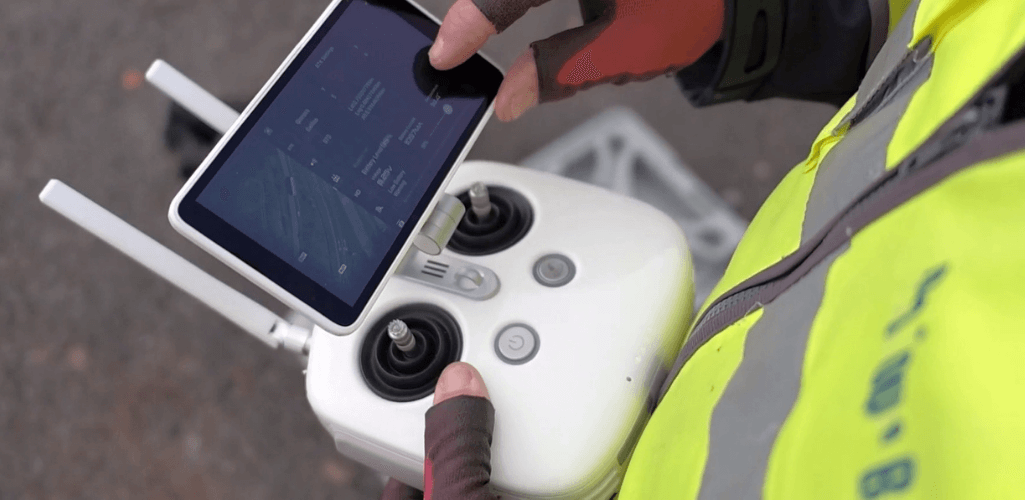
Logan said: "Another advantage of the Phantom 4 RTK is its remote controller.
"Having prior experience with DJI drones, I have been accustomed to using a tablet as the monitor and having batteries built into the remote.
"As the Phantom 4 RTK has an all-in-one remote, it solves the issue of having to worry about whether the viewing tablet is charged.
"Then the swappable batteries are a huge plus for multiple or large operations. There's no more waiting on equipment to charge, just swap the batteries out."
Using Drones To Complement Traditional Surveying Methods
Drones have become a crucial tool for mapping, but they complement traditional surveying tools, rather than replacing them.
Logan, who is also a CAD Technician for the Engineering Department, said: "I can say for certain that when we perform a survey by having drone imagery behind the drawing, it is a major help.
"I am no longer playing connect the dots when the field crew comes in with a survey, and it also almost eliminates the need for site photos.
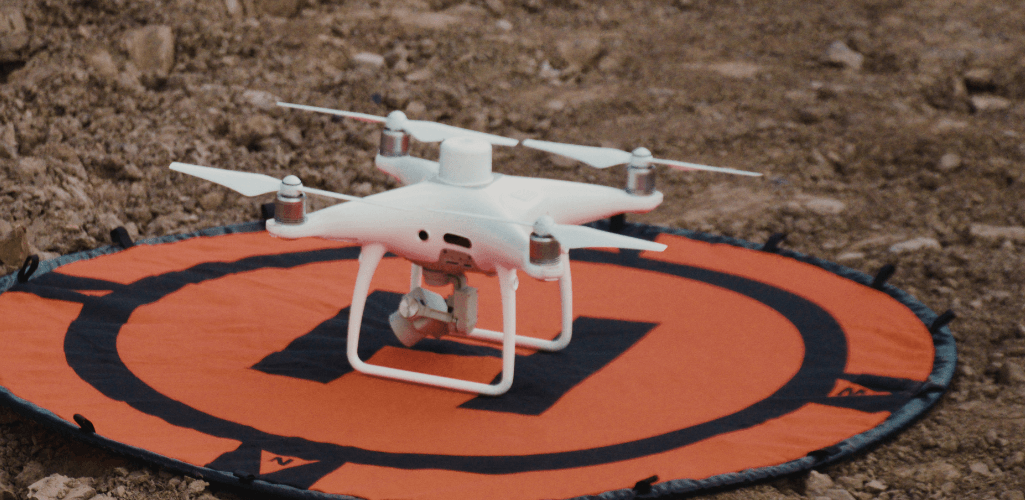
"A huge advantage is mapping an area for 3D with the drone. By having a very accurate point cloud we can generate accurate contours for the area of interest.
"Granted this point cloud is way too detailed for me to use in Autodesk Civil 3D, so I end up cutting out 95% of the points.
"But that 5% that is left is still plenty of points to give me better contours then what the State can provide.
"Our point cloud - even a trimmed version - has a point roughly every foot - which is still accurate and represents the area of interest, compared to the State data which has a point every 6.5 feet.
"By having them one foot apart, our surface is still accurate and represents the area of interest without putting too much stress on the computer."
Using Ground Control Points
By deploying the DJI Phantom 4 RTK, the City of Henderson Engineering Department has been able to reduce the number of GCPs that it has to put out for a survey.
However, it is standard Department practice to use some GCP points; despite the fact that, in some cases, the P4 RTK can eliminate the need for GCPs altogether.
Logan said: "In our department, GPS control points are a must. Every map that we have produced is added to our GIS imagery, with the hopes of covering the whole city limits in the future.
"We have several different ways that we place GCP points on our projects.
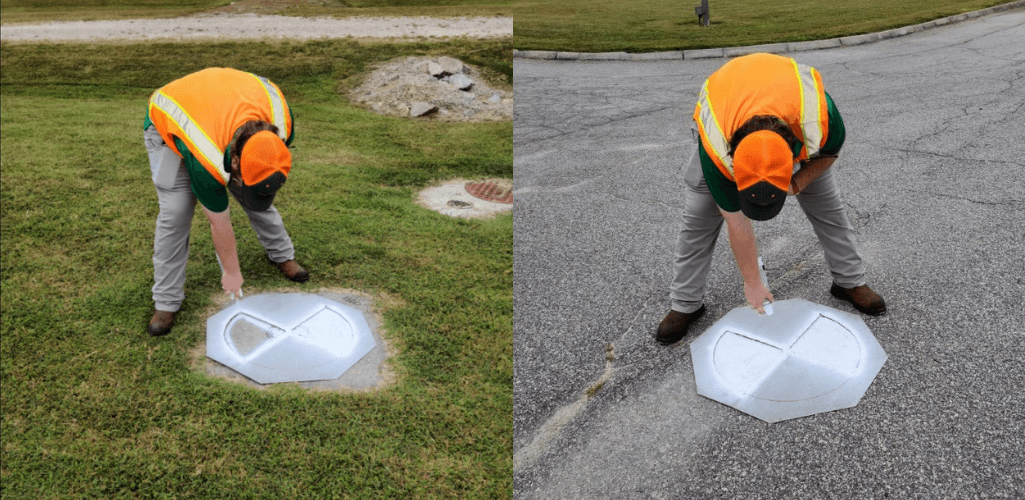
"Our preferred way is an old stop sign that we repurposed to use as a stencil to fit exactly over the top of manholes.
"We have also utilized other street signs that have the grids painted on them to use in fields.
"Our preferred method for data collection is our survey-grade EOS GPS. This GPS interfaces directly with our GIS and points are added in real-time.
"From GIS we can export the points as a csv with all of the needed information, such as coordinates and accuracy of the GPS at the time of the shot.
"After we have finished processing the map, we can import the map into GIS and visually check and measure the difference between our points and the processed map."
Drone Mapping Workflows
The City of Henderson Engineering Department has demonstrated the benefits of using the DJI Phantom 4 RTK for drone mapping.
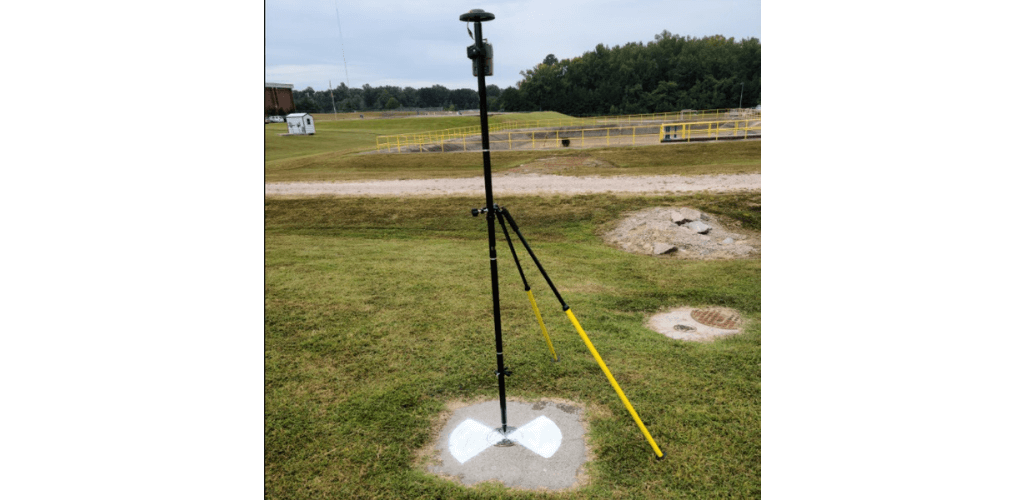
With this in mind, how does the Department go about conducting an aerial drone survey?
Logan has set out a five-step summary which makes up the Department's Standard Operating Procedure.
Step 1: The Plan
Create a kml file of the property parcels of the perspective area. The file is transferred to the drone for map pre-caching.
Step 2: Mobilize To The Mapping Site
Prepare and set GCP points anywhere from a day prior to the same day; this depends on how many need to be set.
City of Henderson's GCPs are typically set 500 ft apart.
Logan said: "This may be a bit excessive, but you can pick and choose which ones to use."
The GCPs are marked with either a template that was made for painting asphalt or some deployable targets that are used in grassy areas.
Step 3: Finish Preparing The Flight Mission
Logan said: "After we've estimated the tallest object's height, we adjust the flight altitude to 100ft above, if necessary - and if it can be done legally."
The Department sets the image overlap to 80% in both directions; this means that if the drone skips a row then the image overlap is at the bare minimum (60%) for the software to process.
All missions are flown on distance triggering instead of time triggering.
Step 4: The Flight
The City of Henderson Engineering Department has set internal rules to help increase safety, no matter the location.
Logan said: "The Remote Pilot in Command (RPIC) is required to have at least one Visual Observer to help avoid obstacles, non-participating aircraft and personnel, and to watch the drone when the RPIC cannot.
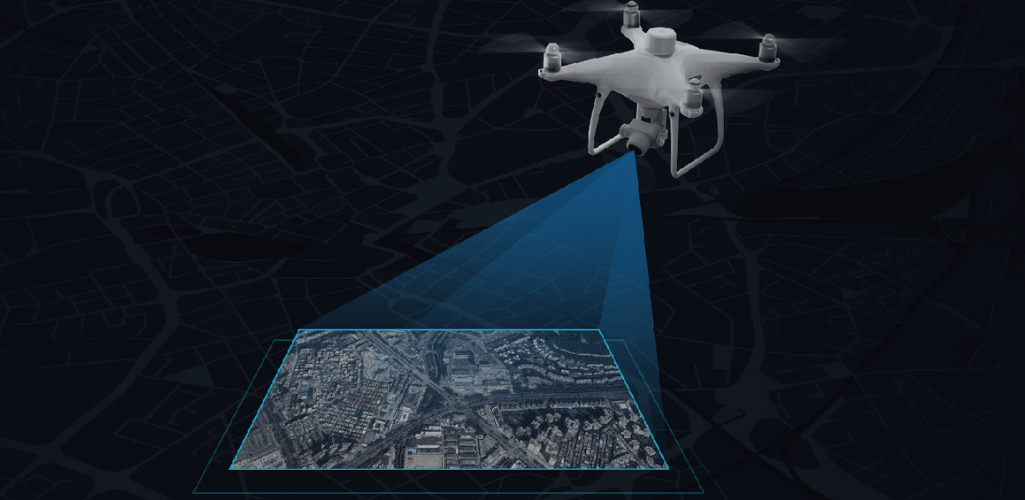
"The flight crew is also required to pull up the ADS-B receiver that receives and displays all aircraft that are transponder equipped.
"While this is a good tool to have in the toolbox, this is not a replacement for scanning techniques that will help spot all aircraft. We use it as an aid, not as a crutch.
"The Flight Crew is also required to review the study guide for the Part 107 Test; this helps bring them up to speed so they understand all aspects of what a RPIC needs to know to operate an drone safely."
Step 5: Post Flight
The Department's preferred photogrammetry software is Pix4D, utilizing the on-site servers.
Typically, the standard 3D maps option is used; deemed best for the Department's workflow.
In the initial setting up of the pictures and GCPs for processing, the team processes 'step one'.
Once step one is completed, the rayCloud editor is used to establish the GCP with the initial data. Each GCP typically has about 10 images.
Logan said: "We don't really use checkpoints since we can easily import the finished map into ArcGIS Pro to make the assessment."
Once the GCPs are tagged, the rest of the processing is completed.
What Does The Future Hold For The Drone Program?
The City of Henderson Engineering Department has certainly proved the value of drones.
So what does the future hold for its UAS division?
"Our drone program is in its infancy," said Logan.
"Currently, the Phantom 4 RTK is the only unmanned aircraft in our Department; before purchasing, we had one on loan from an employee to help justify buying it.
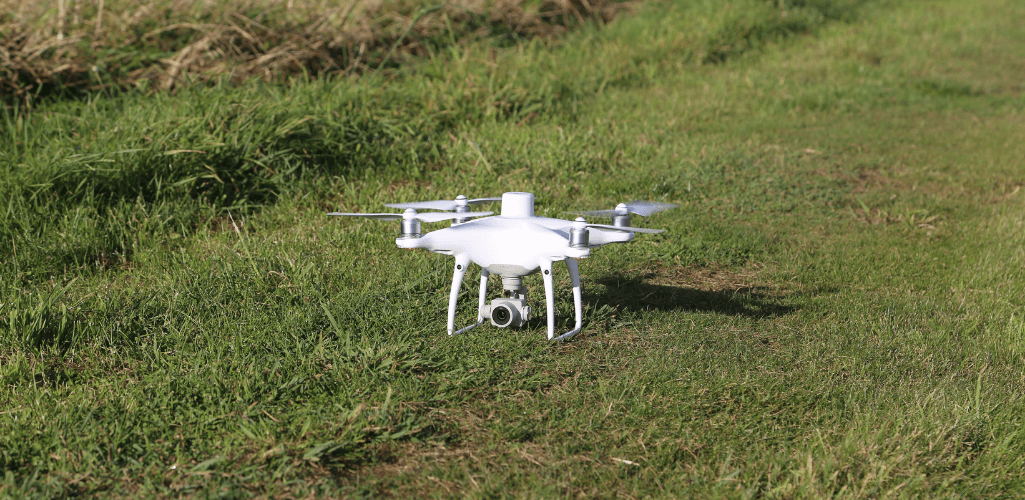
"Our Department currently has one pilot who is managing our operations, however another pilot is in training to be a backup pilot.
"One day, we would love to map our whole city with this level of imagery.
"This will greatly benefit all departments in finding and maintaining assets across the city."
Heliguy Supports City of Henderson's Drone Program
Commercial drone firm Heliguy - which is based in the U.S. and the UK - has equipped City of Henderson with the Phantom 4 RTK.
The company's resident surveyor and GIS specialist, Ben Sangster, has worked closely with the Department to support its drone program, and will provide ongoing advice and expertise.
Logan said: "We chose Heliguy out of three quotes that were obtained from various companies.
"Heilguy was the most responsive out of the three, and the purchasing of the drone was a nice and streamlined process.
"Our sales rep Ben has been extremely helpful, especially when I have had questions about tracking the package or technical questions about the system itself.
"We would like to rate our overall experience with them a 9 out of 10."
To speak to one of Heliguy's commercial drone team and find out how Heliguy can support your drone program, contact us.
